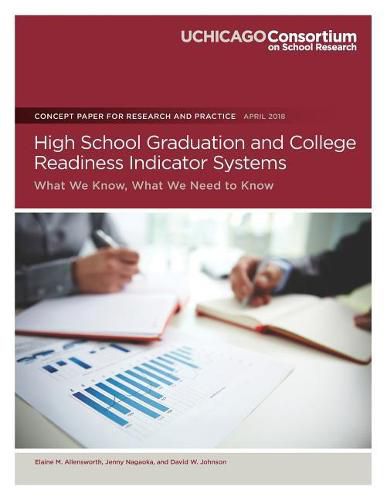Readings Newsletter
Become a Readings Member to make your shopping experience even easier.
Sign in or sign up for free!
You’re not far away from qualifying for FREE standard shipping within Australia
You’ve qualified for FREE standard shipping within Australia
The cart is loading…






In districts across the country, school practitioners rely on early warning indicator systems (EWI) to identify students in need of support to graduate high school and be prepared for college. By organizing pieces of data on student performance into indicators, practitioners can develop and test school strategies to improve students’ educational attainment with data that are readily available, making indicator systems a potentially powerful tool for supporting student outcomes. While the use of indicators for reaching school and district goals around students’ educational attainment has been widely embraced, it is not always clear how to do so in ways that will lead to better educational attainment for students. Questions about how to use indicator systems effectively generally focus on: 1) How are indicators used to improve high school and college graduation rates, and 2) Which indicators should be the focus of an early warning or college readiness indicator system? These questions are intertwined. Decisions about which indicators are the best indicators to use depend on how they are being used, and questions about how to use indicators depend on the choice of indicators. This paper provides a brief overview of the current state of the use of indicators for improving students’ educational attainment, considerations about which indicators to use when developing an indicator system, and some of the questions that have arisen as schools, districts, and states engage in these efforts. It is intended for people who are positioned between the research and practice spheres, such as district and state institutional researchers, or researchers at universities and research organizations who work closely with schools and districts. It may also be of interest to school and district administrators with a strong interest in developing and refining high school graduation and college readiness indicator systems, and an interest in the data and research behind such systems.
$9.00 standard shipping within Australia
FREE standard shipping within Australia for orders over $100.00
Express & International shipping calculated at checkout
In districts across the country, school practitioners rely on early warning indicator systems (EWI) to identify students in need of support to graduate high school and be prepared for college. By organizing pieces of data on student performance into indicators, practitioners can develop and test school strategies to improve students’ educational attainment with data that are readily available, making indicator systems a potentially powerful tool for supporting student outcomes. While the use of indicators for reaching school and district goals around students’ educational attainment has been widely embraced, it is not always clear how to do so in ways that will lead to better educational attainment for students. Questions about how to use indicator systems effectively generally focus on: 1) How are indicators used to improve high school and college graduation rates, and 2) Which indicators should be the focus of an early warning or college readiness indicator system? These questions are intertwined. Decisions about which indicators are the best indicators to use depend on how they are being used, and questions about how to use indicators depend on the choice of indicators. This paper provides a brief overview of the current state of the use of indicators for improving students’ educational attainment, considerations about which indicators to use when developing an indicator system, and some of the questions that have arisen as schools, districts, and states engage in these efforts. It is intended for people who are positioned between the research and practice spheres, such as district and state institutional researchers, or researchers at universities and research organizations who work closely with schools and districts. It may also be of interest to school and district administrators with a strong interest in developing and refining high school graduation and college readiness indicator systems, and an interest in the data and research behind such systems.